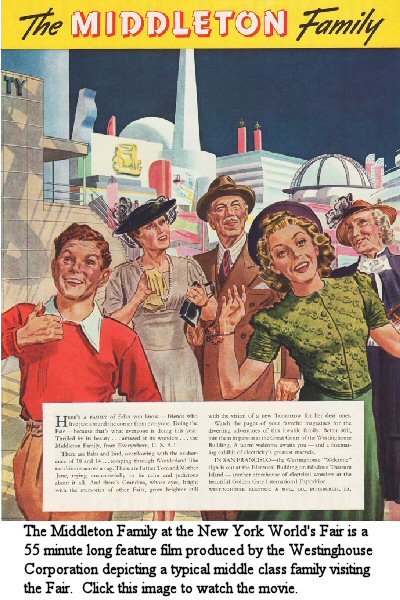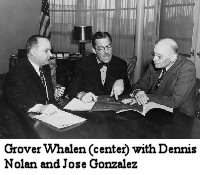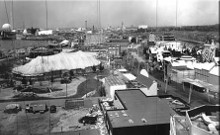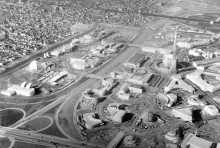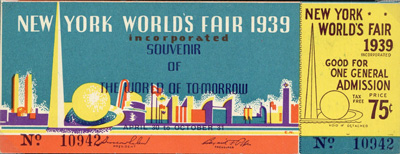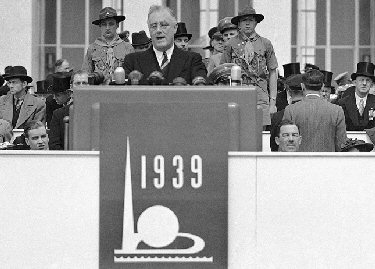


Discover the various ways visitors could travel about the fairgrounds.

At the center of the fairgrounds, dominated by the futuristic Trylon and Perisphere, the Theme Center is where many people began their adventure in the World of Tomorrow.

Powered by dozens of gears and electrical relays, Elektro the Westinghouse Moto-Man fascinated thousands of fair-goers with his witty remarks and state of the art antics.

The central feature of the General Motors Highways and Horizons pavilion, Futurama provided a glimpse of what a modern city might look like in 1960.

Many Americans were introduced to the idea of television at the fair. One feature was a closed circuit studio where visitors could be televised and friends and family could view their performance on a receiver in an adjacent room.

The Transportation Zone included exhibits related to the automotive industry, railroads, marine travel and much more. The most popular attraction was the lavish Railroads on Parade pageant.

Literature, historical documents, consumer goods and scientific information was among the many items crammed into the torpedo shaped Westinghouse Time Capsule. The Capsule was buried fifty feet below the Westinghouse exhibit, to remain undisturbed for five thousand years.





